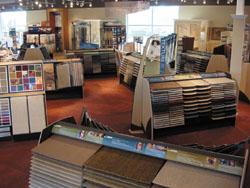Retail Success From Market Analysis-February 2008
&quo
By Kemp Harr
Most retailers understand the fundamentals for achieving success by making the right strategic marketing decisions, but given our current economic situation, now is a good time to review the basics. It’s true that you can’t manage what you don’t measure and measuring the right performance criteria can give you valuable information, allowing you to make decisions that improve your bottom line. Is your store in the right location, have you selected the right advertising mix to increase store traffic, have you analyzed your competition to see how you compare, and finally, are you measuring your customers’ satisfaction?
Store Location
Whether or not your store is in the right location has become increasingly important as cities become more populated and travel time is stretched by heavy traffic. Couple travel time with the fact that your target consumers—women, homeowners, age 35 and up—have less disposable time and you start to see why store location is so important. Granted, most flooring purchases aren’t impulsive, but convenience still plays a factor in which retailer gets the business. Fortunately, there are inexpensive studies available that provide valuable demographic data by zip code. One such report, tailored for the flooring market, is available from Santo Torcivia at Market Insights.
Advertising Effectiveness
On average, we find that most flooring retailers spend 5% to 6% of their gross sales on advertising, with the goal of increasing awareness and more fundamentally increasing their store traffic. But the big question is, out of all the options, which media are most effective? Is there a way of correlating advertising purchases with how frequently the door swings open and a prospect walks in the door? If there was one sure promotional mix that worked in every market, we’d be the first to write about it. But the fact is, what works in Russellville, Kentucky is far different from what works in San Jose, California.
Factors that impact promotional mix effectiveness are market size, number and types of competitors, message quality, media options and target audience. Experience has taught most savvy retailers that you can’t rely on in-store surveys to give you an accurate read on what’s working, primarily because consumers are bombarded with messages and they have difficulty remembering the source. But if a customer walks in carrying a coupon she received in the mail, clipped from a print ad or printed off your Internet site, you start to get a clearer picture.
Measuring the effectiveness of your TV or radio ads requires a little more creativity. The trick is to vary the offer so you can measure which ad motivated the visit based on what they’re asking for (examples are a percentage off, a free pad upgrade or an installation discount). In the interest of capturing the data, make sure you train your salespeople to run a tally of what offers are being requested so you can measure the results.
Competitive Analysis
Recent studies indicate that consumers are visiting fewer stores before they purchase flooring. One factor that we mentioned earlier was the lack of available shopping time but another important factor is technology. Today the consumer can quickly visit a store on the Internet or make a telephone call to determine which store to visit in person. So when you analyze how you rate versus the competition, you need to think of the telephone and Internet as alternative “front doors.” Most retailers we talk to have their salespeople check out the competition’s pricing on an infrequent basis but we suggest that a more thorough comparison with a measurable checklist is called for. One very effective approach is to use a third party “mystery shopper” who can view your store as objectively as she sees your competition. Part of the process is identifying which criteria should be evaluated (see sidebar) and making sure the shopper knows not to walk in carrying a clipboard with a checklist.
Once you have assessed how you compare to your competition, it’s time to make some changes based on your findings. Naturally you want to correct areas where you are deficient but at the same time you want to avoid being “me-too.” Try to identify areas where you can stand out and make sure those areas are important to the customer. Reducing the clutter and making sure the purchasing process is simple and easy are usually good places to start.
|
COMPETITIVE ANALYSIS |
|
Items to rate versus your own performance
|
Customer Satisfaction
Although we mention this last, measuring customer satisfaction is the most fundamental factor to any retailer’s success. Positive referrals only come from satisfied customers, and many retailers thrive on business they get from the friends, neighbors or associates of satisfied customers. There is also no better way to identify an issue that needs to be resolved, which often can turn a dissatisfied customer into an ally. And don’t forget that information you get from a recent customer can be used to reward your employees for the right kind of behavior.
The best time to conduct a satisfaction survey is right after the floor has been installed. And while written surveys can be left behind by your installers, we recommend a phone call or visit by someone in the store who has not interacted with the customer. This is the only way to ensure that you’re getting objective feedback on all facets of the experience. Customers are usually a little euphoric right after a new purchase and if the survey goes well, there is no better time to ask for a referral. And again, as with any measurement system, make sure the person conducting the survey is working from a checklist and recording the results.
|
CUSTOMER SATISFACTION |
|
Measurement Areas
Rating Scale
|
Copyright 2008 Floor Focus
